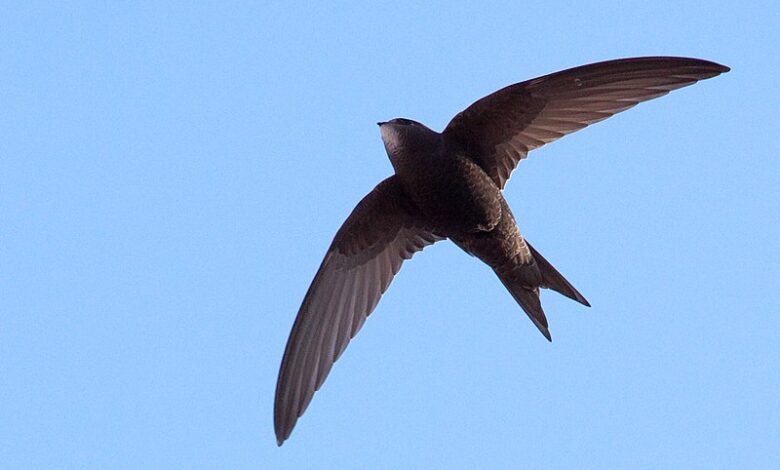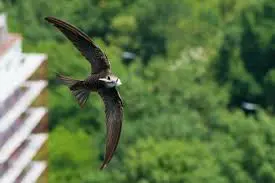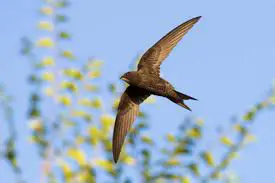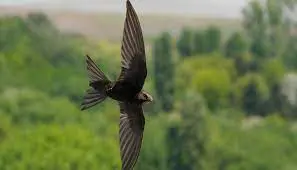“common swift bird “Apus apus

“common swift bird “Apus apus” : is a medium-sized , superficially similar to the barn swallow or house martin but somewhat larger, though not stemming from those passerine species, being in the order Apodiformes. The resemblances between the groups are due to convergent evolution, reflecting similar contextual development. The swifts’ nearest relatives are the New World hummingbirds and the Southeast Asian treeswifts

Its scientific name Apus is Latin for a swift, thought by the ancients to be a type of swallow with no feet (from Ancient Greek α, a, “without”, and πούς, pous, “foot”).
Swifts have very short legs which they use primarily for clinging to vertical surfaces (hence the German name Mauersegler, literally meaning “wall-glider”). They never settle voluntarily on the ground, where they would be vulnerable to accidents and predation, and non-breeding individuals may spend up to ten months in continuous flight.

Geographic Range
Common swifts, Apus apus, can be found in almost any region from western Europe to eastern Asia and from northern Scandanavia and northern Siberia to North Africa, Himalayas, and central China. Apus apus can be found throughout this range during the breeding season and, following migration, spends the winter months in Southern Africa, from Zaire and Tanzania south to Zimbabwe and Mozambique

Habitat
The majority of the breeding habitat of A. apus is located in temperate zones, where there are suitable trees for nesting and sufficient open spaces in which to fly to gather food. The habitat of Apus apus during the months following migration into Africa, however, is tropical. Common swifts have been observed breeding from sea level to several thousand meters in elevation. Apus apus prefers areas with trees, or buildings with open spaces, and is able to use vertical surfaces such as rock walls and chimneys for nesting due to a unique physical adaptation possessed by all swifts (Apodidae).
اقرأ المزيد..NASA Mulls Using SpaceX to Rescue Astronauts
Physical Description
Common swifts are 16 to 17 cm in length with a wingspan of 42 to 48 cm, depending on the age of the individual. Common swifts are black-brown with the exception of a white to cream colored chin and throat (located directly underneath the beak).

In addition, the topside of the flight feathers is paler brown-black in comparison to the rest of the body. Apus apus can also be distinguished by its moderately forked tail feathers, its narrow, sickle-shaped wings, as well as its shrill, screaming call. Apus apus is frequently mistaken for swallows. Apus apus is larger and has very a different wing shape and flight pattern than do swallows
All species in the family Apodidae possess a unique morphological characteristic, a lateral “grasping foot” in which toes one and two are opposed by toes three and four. This allows common swifts to occupy areas such as walls of rock, chimneys, and other vertical surfaces that would be difficult for other types of birds to inhabit. Apus apus is a sexually monomorphic species, meaning that the males and females look alike. There has been no seasonal or geographical variation reported in the appearance.
اقرأ ايضاً..football legend Pele dies aged 82
However, it is possible to distinguish juveniles from adults in the slight difference in richness and uniformity of their coloration, as it is common for juveniles to be blacker in color, as well as to have a pale forehead, white-fringed feathers, and a starker white patch under the beak.








